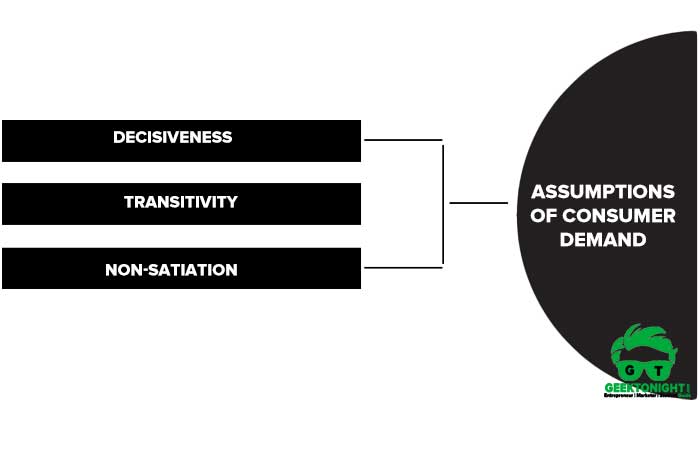What is Consumer Demand?
Consumer demand is defined as the willingness and ability of consumers to purchase a quantity of goods and services in a given period of time, or at a given point in time.
Consumers consider various factors before making purchases.
For example, a particular brand, price range, size, features, etc. These factors differ from one individual to the other depending on their income level, standard of living, age, sex, customs, socio-economic backgrounds, tastes and preferences, etc. These factors form the basis for consumer buying behaviour.

Table of Content [Show]
Manufacturers are always interested to gain insight into consumer buying behaviour. For this, they need to analyse consumer demand for their products and services.
Also Read: What is Demand?
Consumer Demand Analysis
Consumer demand analysis is a process of assessing consumer behaviour based on the satisfaction of wants and needs generated by a consumer from the consumption of various goods.
The satisfaction that consumers gain out of the consumption of a commodity or service is called utility.
Assumptions of Consumer Demand
The study and analysis of consumer behavior is based on three main assumptions, which are listed.
Let us consumer demand assumptions in details:

Decisiveness
It is assumed that a consumer is able to state his/ her own preference or indifference for two different commodities.
Therefore, consumers are least ambiguous or confused about deciding between different commodities. This is referred to as decisiveness of consumers.
For example, an individual goes to a fast food restaurant and is asked to opt between pizza and burger.
According to the assumption of decisiveness, the individual would act in one of the following ways: Opt for pizza, Opt for burger, Opt for none of the two and walk out.
Transitivity
In consumer demand, it is assumed that the preferences of an individual consumer are always consistent. An individual’s preference or indifference for one commodity over another can be applied to another related commodity. This is referred to as transitivity.
In the above example, if the individual chooses pizza over burger, burger over pasta, then the individual would prefer pizza over pasta too as per the assumption of transitivity.
Non-satiation
It is assumed that a consumer is never completely satisfied. If a consumer prefers a commodity, he/she would continue to demand it. This is referred to as non-satiation.
For example, a larger pizza is preferred over a smaller pizza; two dresses are preferred over one; etc. However, non-satiation is not a fundamental assumption as rational consumers get satiated after a certain limit.
Leave a Reply